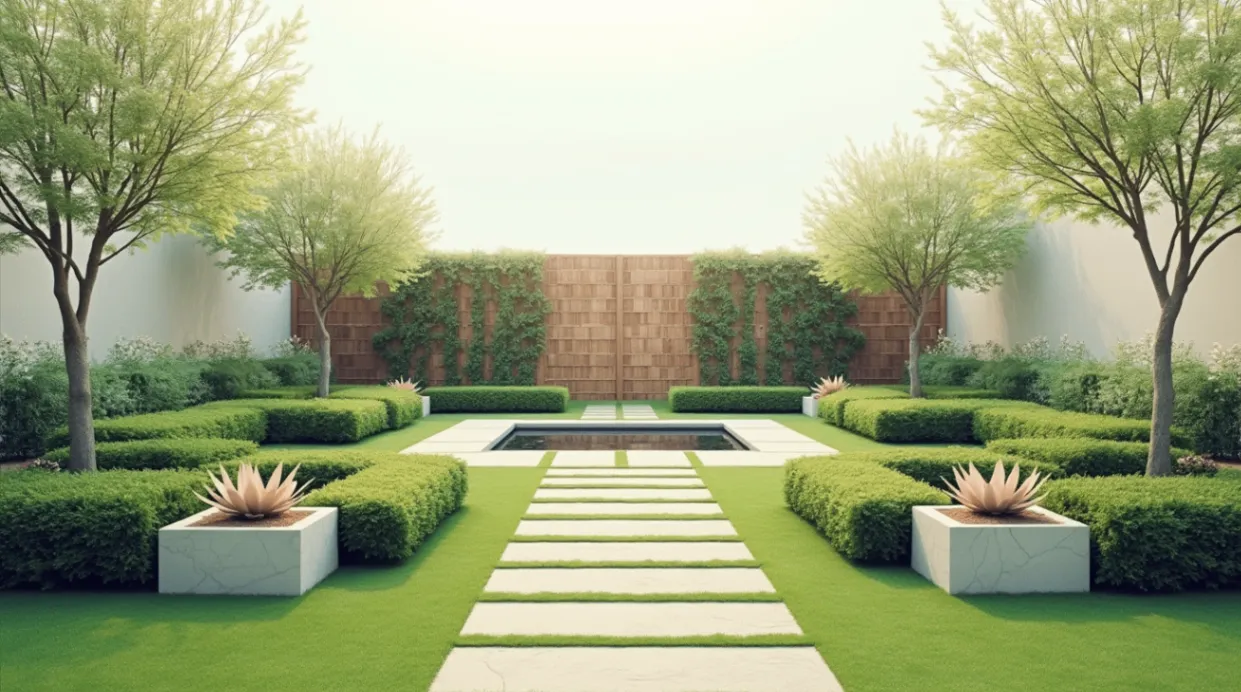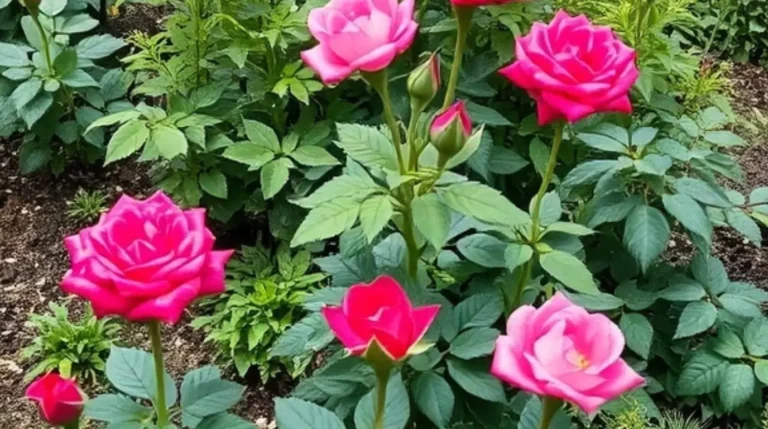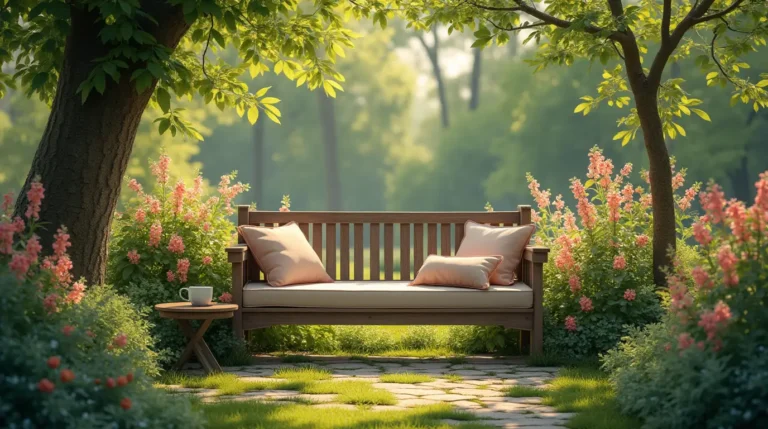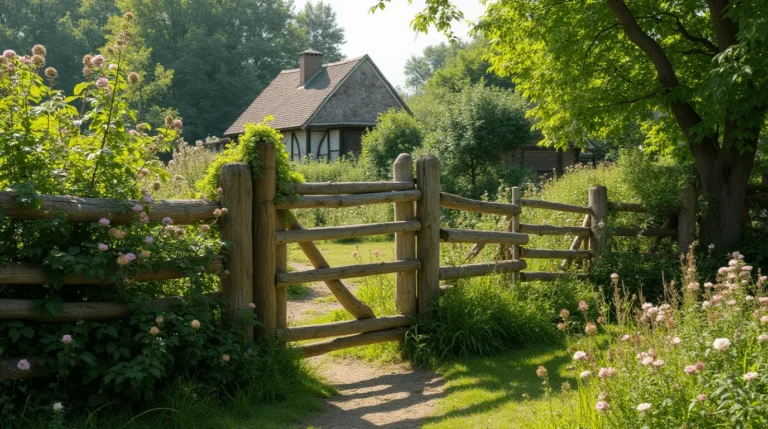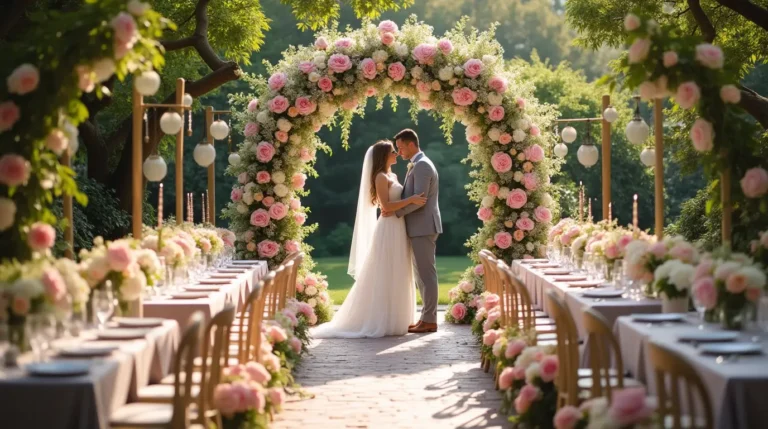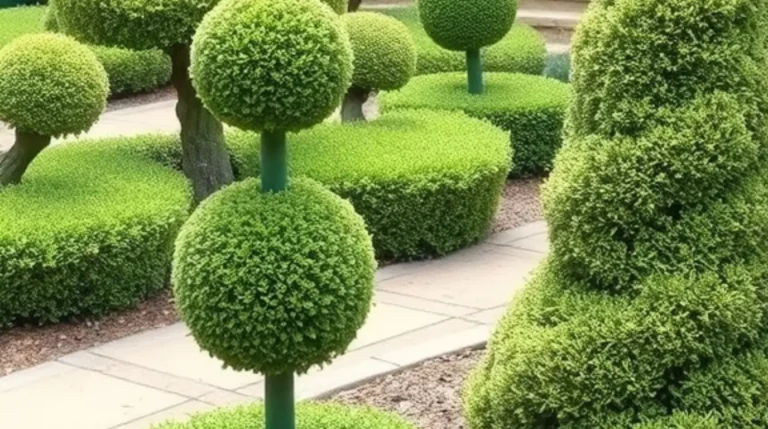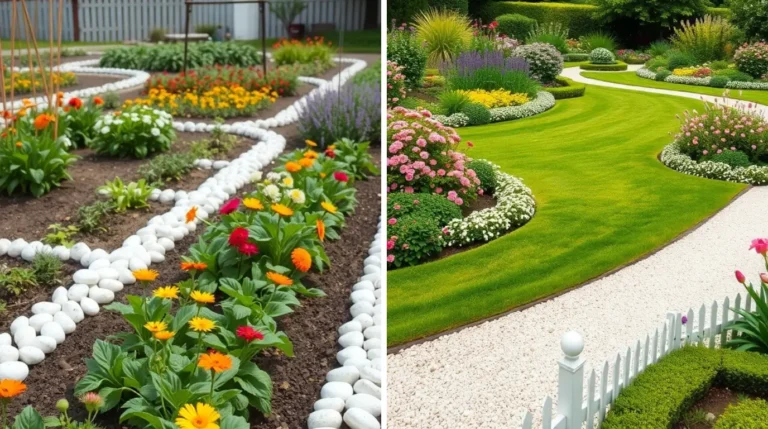Modern Minimalist Small Garden: 9 Stunning Layouts You’ll Love
A modern minimalist small garden offers a perfect blend of simplicity and style, transforming even the tiniest spaces into serene retreats. By embracing clean lines and uncluttered designs, these gardens create a contemporary oasis that appeals to busy homeowners seeking tranquility. The central idea of minimalism—where less is more—shines through in curated British garden styles, proving that simplicity can be both elegant and functional.
In such designs, a limited plant selection and simple materials are key. This approach not only enhances the beauty of small spaces but also makes maintenance easier. Whether you have a cozy urban courtyard or a larger backyard, smart planning and repeated design elements can make your outdoor area equally inviting. This article reveals 9 stunning layouts to inspire your next project, showing how minimalism can work beautifully for any space.
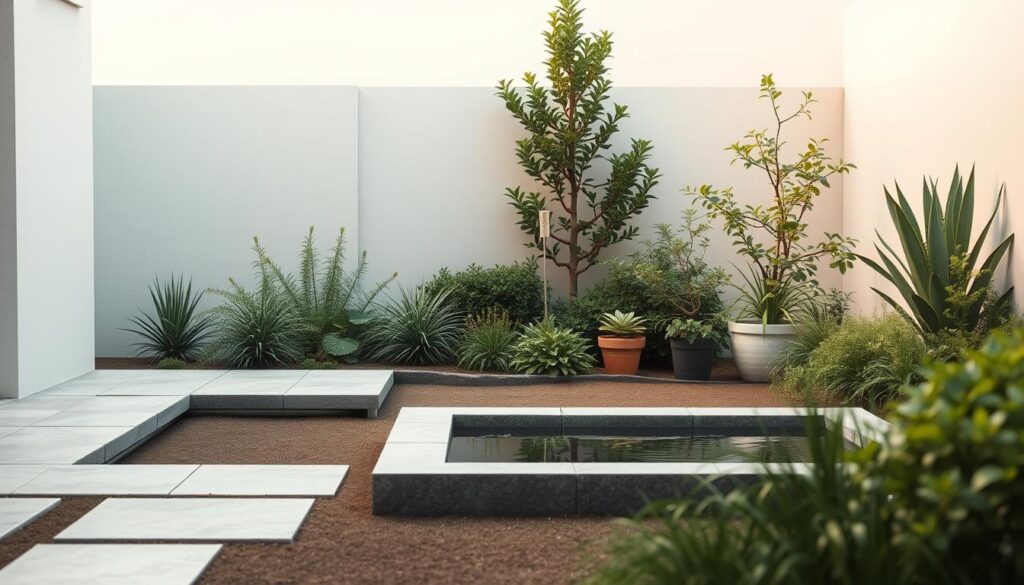
Key Takeaways
- Modern minimalist small gardens emphasize clean lines and simplicity.
- They create a contemporary outdoor oasis suitable for small spaces.
- Less is more: minimalism enhances beauty and functionality.
- Limited plant selection and simple materials work well in small areas.
- Smart planning makes the design accessible for various spaces.
- 9 stunning layouts provide inspiration for your garden transformation.
The Essence of Minimalist Garden Design
Minimalist garden design is all about simplicity and functionality. It focuses on creating a clean and uncluttered outdoor space that promotes relaxation and harmony. By using simple materials and a limited plant selection, minimalist gardens offer a serene atmosphere that is both elegant and easy to maintain.
Defining Minimalism in Outdoor Spaces
In minimalist garden design, the emphasis is on clean lines and uniform materials. This approach creates a sense of order and balance, making the space feel larger and more inviting. The use of repeated patterns and limited color palettes further enhances the tranquil atmosphere, allowing the eye to rest without distraction.
Psychological Benefits of a Clutter-Free Garden
A clutter-free garden has been shown to reduce stress and promote relaxation. Studies suggest that such spaces can have a calming effect similar to indoor areas designed with minimalism in mind. The absence of excessive elements allows the mind to focus on the natural beauty of the garden, creating a sense of peace and tranquility.
“A minimalist garden is not just a space; it’s an experience that connects us with nature in its purest form.”
To maintain visual simplicity while keeping the garden engaging, consider adding a focal point, like a statement plant or a decorative element. This ensures the space remains interesting without breaking the minimalist aesthetic.
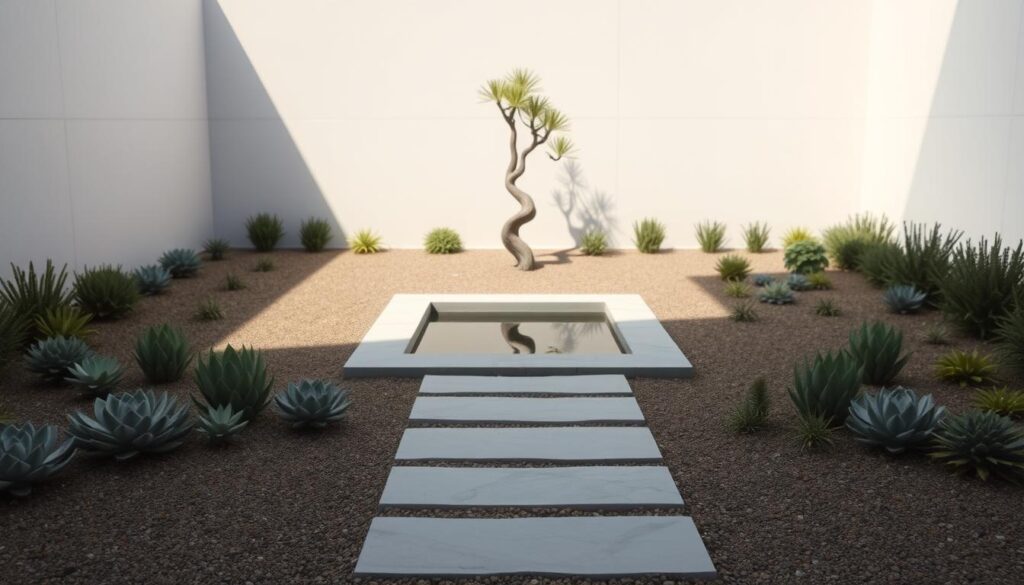
Planning Your Modern Minimalist Small Garden
Creating a minimalist outdoor space begins with careful planning. Start by assessing every inch of your area to understand its potential. This step ensures your design maximizes functionality while maintaining a clean aesthetic.
Site Assessment and Layout Strategy
Begin with a thorough site assessment. Consider sunlight patterns, drainage, and existing structures. This analysis helps create a layout that works harmoniously with your environment. A well-planned design ensures every element serves a purpose, avoiding clutter and enhancing the space’s usability.
Budgeting and Material Selection
Set a realistic budget and prioritize durable, low-maintenance materials. Invest in quality hardscaping elements like patios and paths, as they form the backbone of your design. Choose materials that offer a clean, modern look while fitting your budget. For instance, gravel or concrete pavers are both cost-effective and stylish options.
Selecting the right plants is equally important. Opt for a limited palette of low-maintenance species that thrive in your local climate. This approach keeps the garden looking tidy without requiring constant upkeep. Consider adding a focal point, like a sculptural plant or a decorative feature, to add interest without breaking the minimalist vibe.
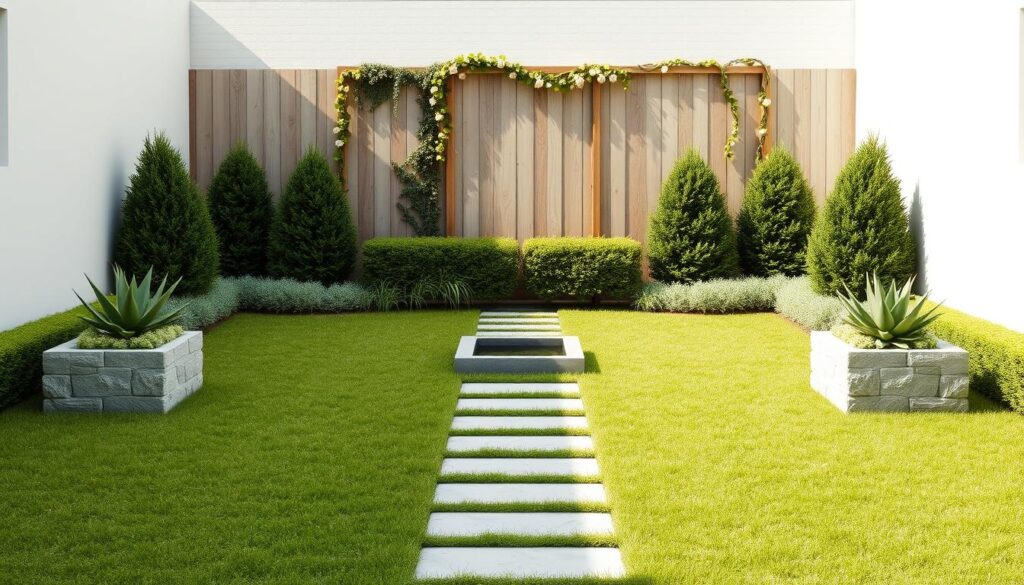
By combining thoughtful planning with smart material choices, you can create a minimalist garden that is both beautiful and functional. Remember, the key to a successful design is simplicity and purpose.
Key Elements and Materials for a Sleek Garden
Creating a sleek, minimalist outdoor space involves careful selection of materials and elements that enhance both functionality and aesthetics. The right combination of hardscaping, plants, and furniture can transform any area into a cohesive retreat.
Hardscaping: Paths, Patios, and Edging
Hardscaping forms the foundation of a sleek garden. Materials like porcelain pavers and grey aggregates offer sharp, contemporary lines. Paved paths and patios define the space, while edging adds a clean finish. These elements create a structured yet inviting atmosphere.
Selecting Low-Maintenance Plants and Greenery
Plants should complement the minimalist aesthetic. Opt for low-maintenance, drought-resistant species like succulents or boxwood. These provide year-round interest without needing constant care. They add natural beauty while keeping the space uncluttered.
Furniture, Planters, and Finishing Touches
Furniture should be functional yet stylish. Choose multi-functional pieces to save space. Ornamental planters can add subtle drama. Each element works together to create a harmonious, stress-free area that feels larger than it is.
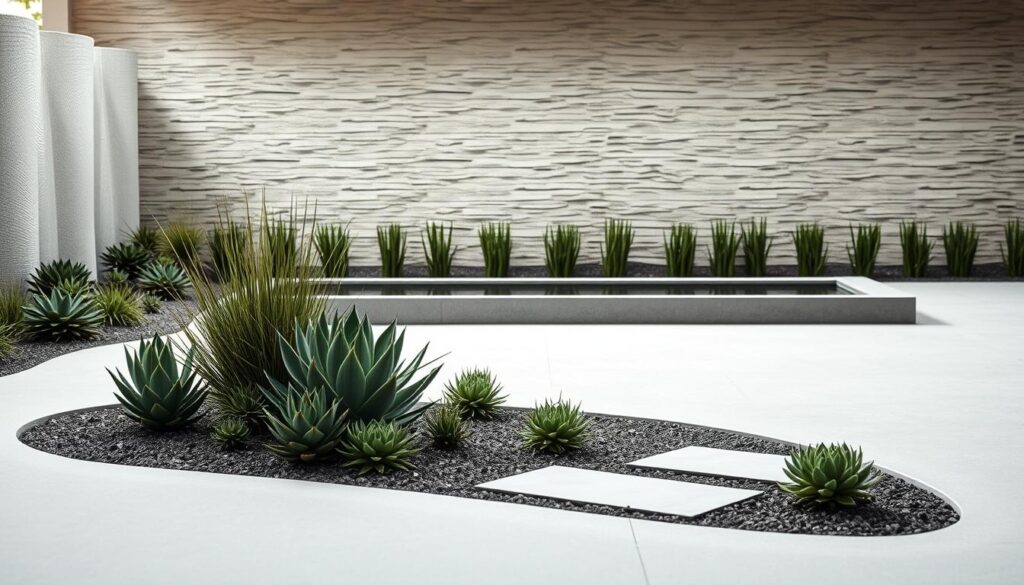
By thoughtfully integrating hardscaping, plants, and furniture, you can craft a garden that is both beautiful and functional. This approach ensures every element serves a purpose, creating a serene oasis.
Creative Layouts and Space-Saving Ideas
Unlocking the full potential of a small garden requires creativity and clever design. By embracing innovative layouts, you can transform even the most compact spaces into functional and visually appealing areas that enhance your outdoor experience.
Inspiring Designs from Real-Life Examples
Real-life examples from British gardens showcase how space-saving ideas can elevate your outdoor area. Consider a central water feature, which adds tranquility without occupying too much space. Vertical planting is another clever technique, maximizing every inch while introducing greenery. Freestanding planters and integrated seating areas further demonstrate how to blend functionality with style, creating a cohesive and inviting atmosphere.
When space is limited, every element must serve a purpose. This balance between functionality and aesthetics is the heart of a well-designed garden.
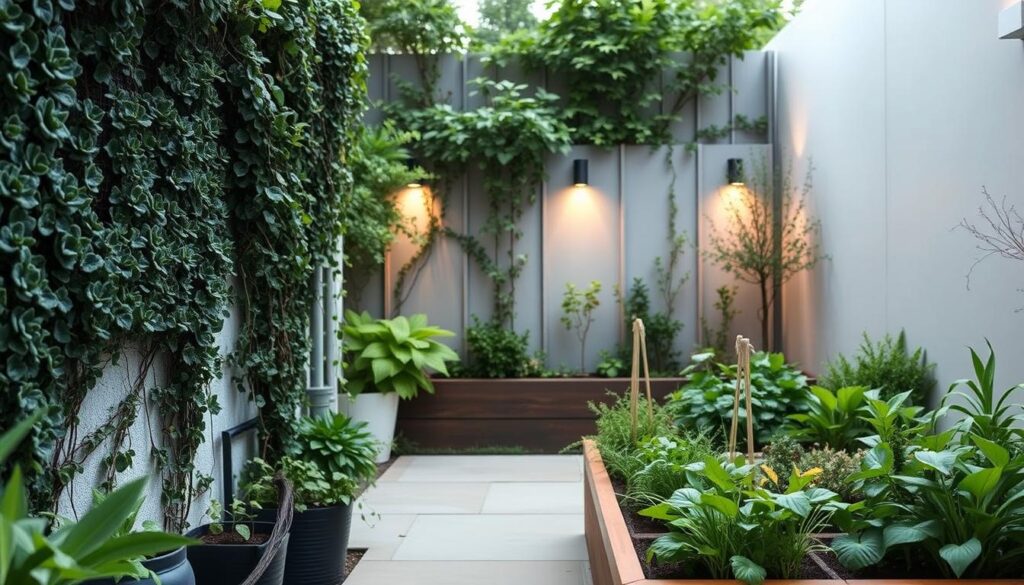
Adapting Ideas to Your Specific Outdoor Area
To adapt these ideas to your space, start by assessing your garden’s unique dimensions and challenges. Choose multi-functional furniture, like a storage bench, to save space. Incorporate planters that double as dividers or decorative elements. These strategies not only enhance the visual appeal but also create the illusion of a larger area, all while maintaining a minimalist aesthetic.
Conclusion
A well-designed minimalist garden offers a perfect blend of simplicity and style, transforming small spaces into serene retreats. By focusing on clean lines and thoughtful planning, these gardens create a harmonious outdoor area that is both beautiful and functional.
Intelligently planned spaces and carefully selected elements are key to achieving a balanced aesthetic. Creative layouts, such as central water features or vertical planting, can elevate even the most compact areas, showcasing how functionality and style can coexist seamlessly.
With the right design, any small space can become a stylish, low-maintenance retreat. We encourage you to apply the tips and examples provided to embark on your own garden project with confidence. Remember, a minimalist garden is defined by its clean lines, balanced aesthetics, and practical functionality.
Experiment with these ideas and personalize them to suit your lifestyle and space. Let your garden be a reflection of your personal style, where every element serves a purpose and creates a sense of tranquility and beauty.
FAQ
How can I create a sense of space in a compact outdoor area?
Use clean lines, light colors, and multi-functional furniture to make the space feel larger. Incorporating reflective surfaces like polished stone or metal accents can also enhance the sense of openness.
What materials are best for a sleek, low-maintenance patio?
Consider using durable, weather-resistant materials such as poured concrete, natural stone, or porcelain tiles. These options are easy to maintain and offer a clean, modern aesthetic.
How do I choose the right plants for a minimalist design?
Opt for plants with simple shapes and foliage, like succulents or grasses. These plants are low-maintenance and add texture without cluttering the space.
What furniture works best for a minimalist outdoor space?
Select furniture with clean, geometric lines and neutral colors. Materials like steel, wood, or recycled plastic are ideal for a modern look. Look for multi-functional pieces, such as storage ottomans or nesting tables, to keep the area uncluttered.
How can I incorporate lighting into my minimalist garden?
Use subtle, energy-efficient lighting like solar-powered path lights or recessed floor lights. These options provide functionality without disrupting the clean design of the space.
What are some tips for maintaining a clutter-free garden?
Regularly clean and organize the area, and avoid over-accessorizing. Use storage solutions like hidden planters or benches with built-in compartments to keep items out of sight.
How can I add visual interest without breaking the minimalist style?
Incorporate a statement piece, such as a sculpture or a water feature, and use contrasting textures or colors in a subtle way. This adds personality to the space without overwhelming it.
Can I still have a functional outdoor space if I have a very limited area?
Absolutely. Focus on multi-functional elements, such as a bench that doubles as storage or a wall-mounted planter. Prioritize what you need most in the space and design around those features.
How do I balance hardscaping and greenery in a small area?
Start with a dominant hardscape element, like a patio, and then add greenery in strategic places, such as planters or a vertical garden. This creates a balanced and harmonious design.
What are some budget-friendly ways to achieve a minimalist look?
Repurpose or upcycle existing materials, shop for second-hand furniture, and keep the design simple. Focus on high-impact, low-cost changes like painting or adding a small water feature.

